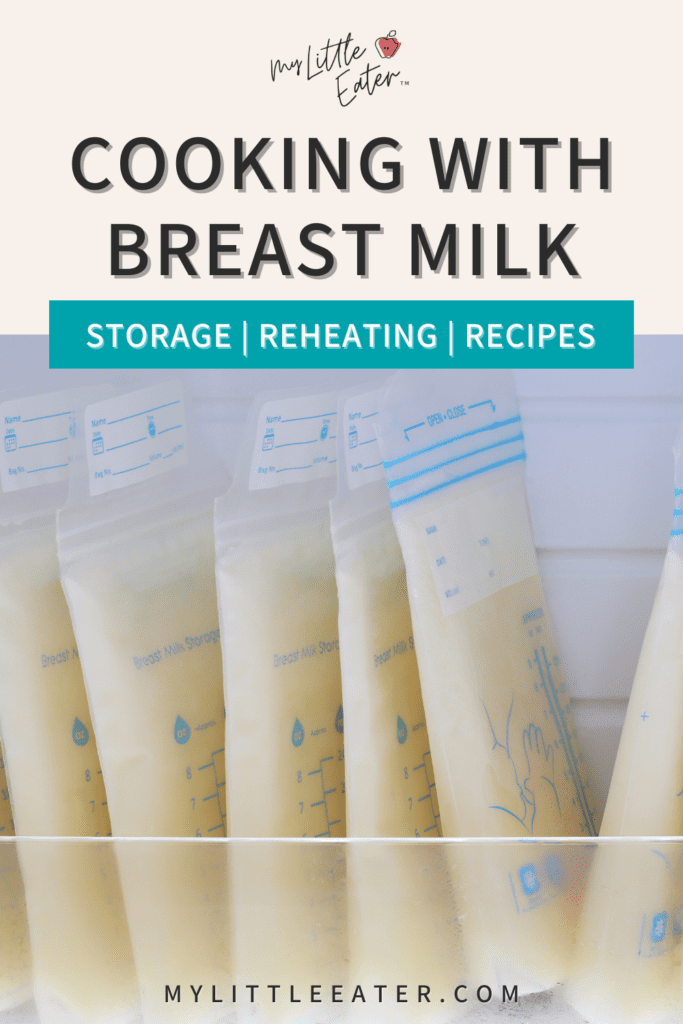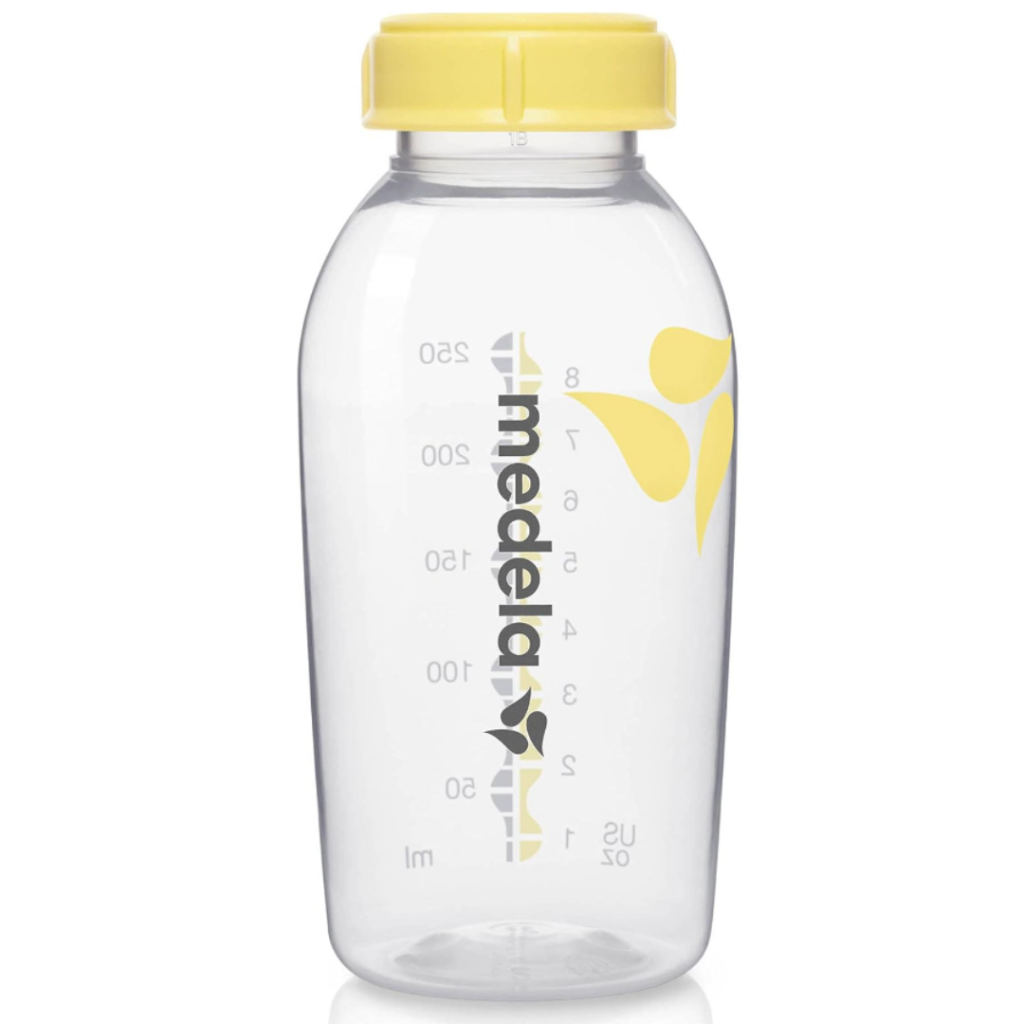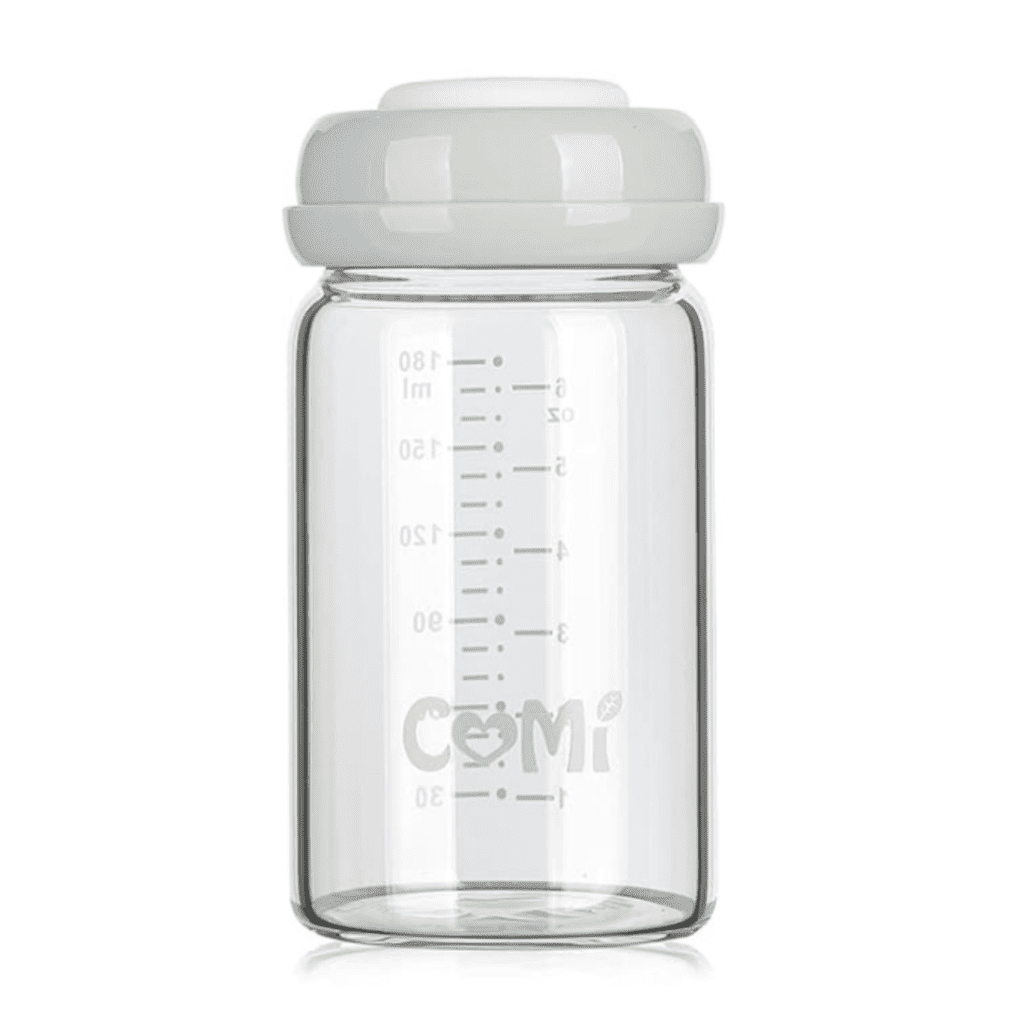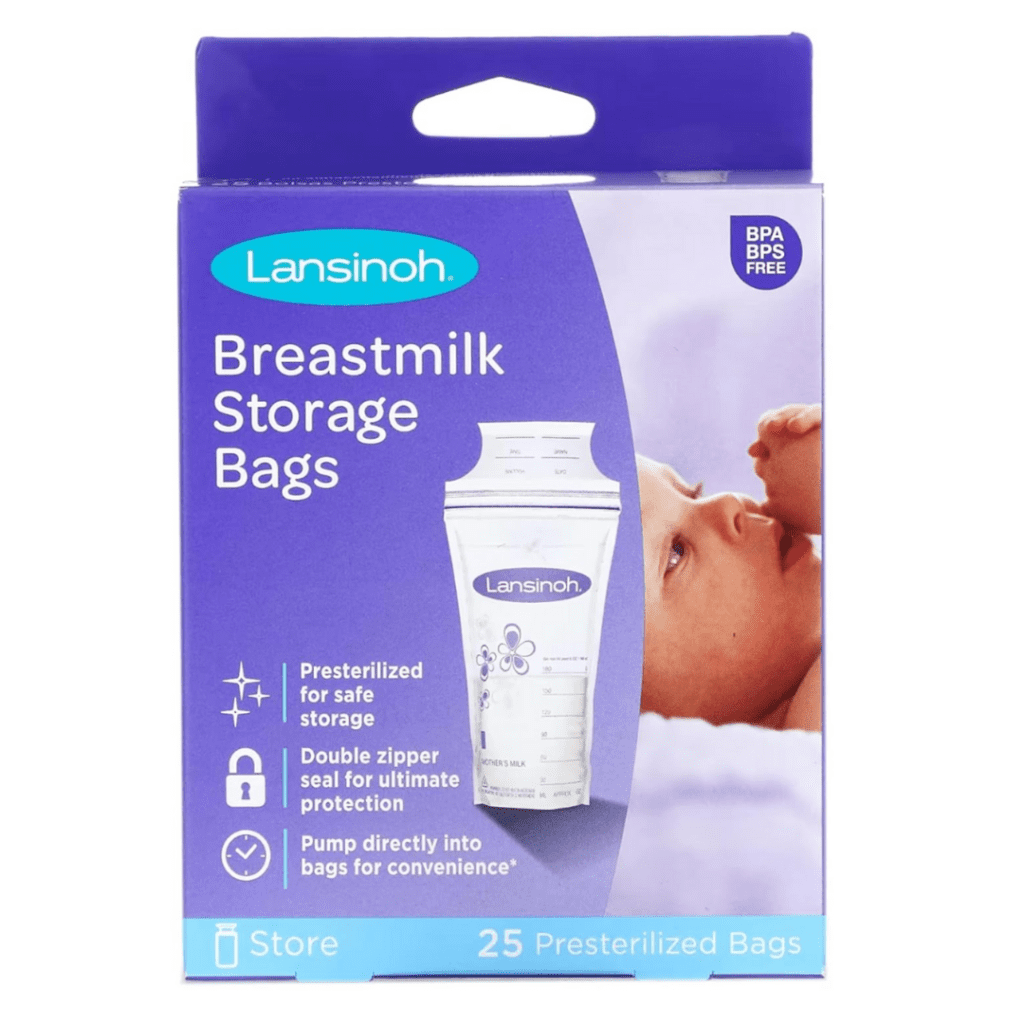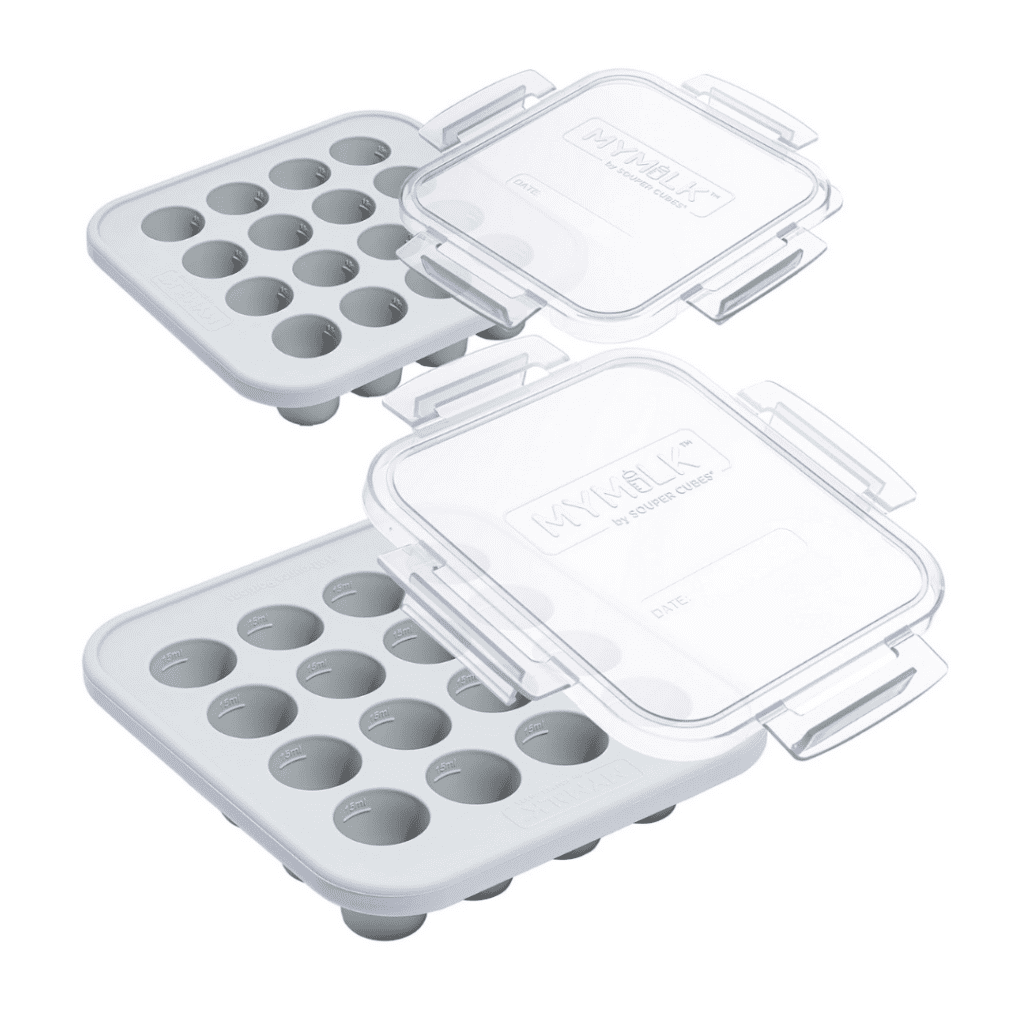This post may contain affiliate links, please view our disclosure policy for more details.
Pumping and storing milk for your little one is a great option if you’re a mom who loves the convenience of not having to breastfeed all the time. Whether you have to go to work or need some time to yourself, pumping your breast milk ensures that your little one gets all the nutrients they need, while you get what you need too!
Sometimes your baby may leave some leftover milk in the bottle or you may pump milk in excess, leaving you with concerns about how to store and possibly re-use the milk. If this sounds like you, we’ve got you covered!
Keep reading to learn how to safely and properly store breast milk and creative ways you can use all that excess breast milk to prepare yummy dishes.
If your baby is in the stage of starting solids, or soon will be, having lots of recipes to choose from can make the process a whole lot easier! That’s why we created our 60 Day Baby Led Feeding Meal Plan with weekly grocery lists, puree and finger food options, and specific instructions on how to serve the food safely to your baby.
Plus, many of them could easily have breast milk added in or substituted in place of the milk/milk alternative that the recipe calls for – meaning you’ll have lots of ways to use any excess fresh or frozen breast milk you may have.
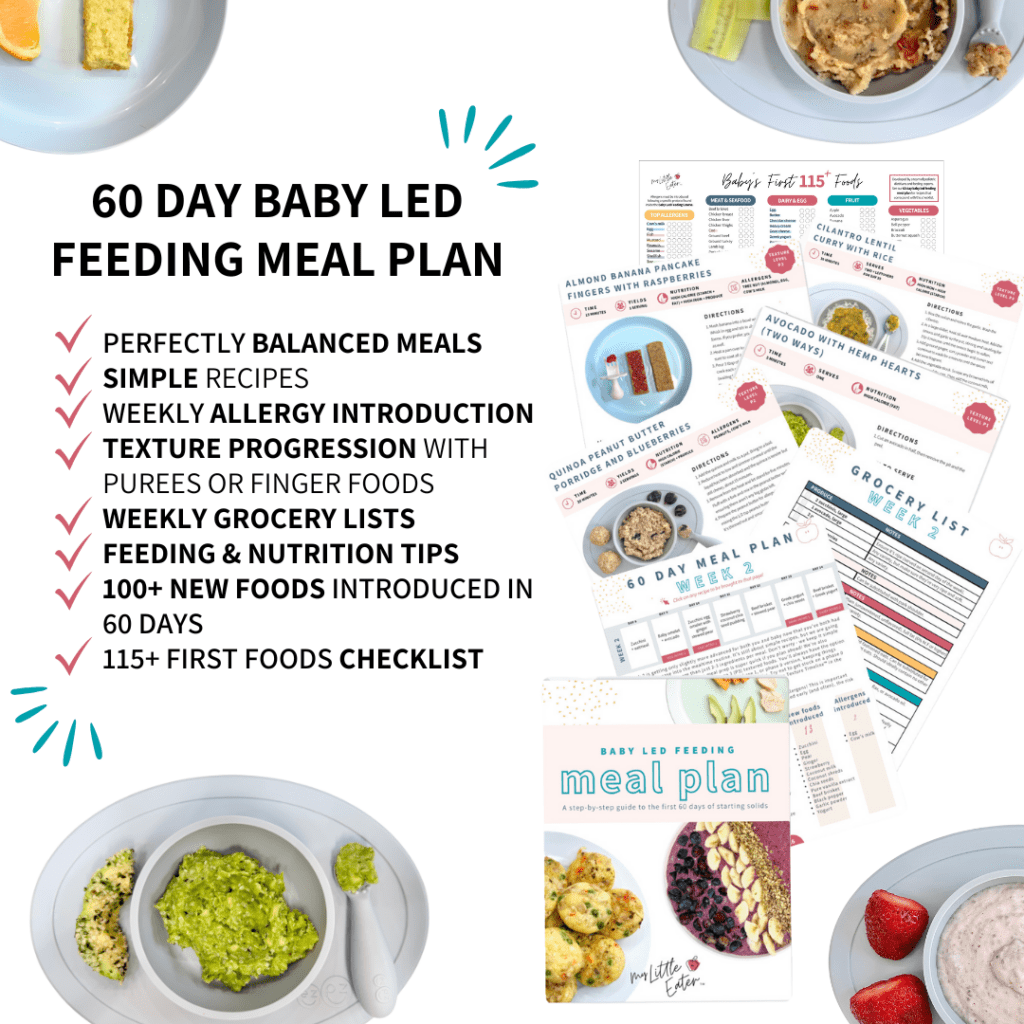
Table of Contents
How long is breast milk good for after a feeding?
Sometimes, your baby may not finish all the milk in their bottle, leaving you to decide whether to store or throw out the left-over breast milk.

According to the Centre for Disease Control (CDC), breast milk left in a bottle after a feeding lasts for just 2 hours (1). This 2-hour period is because all that left-over breast milk in your baby’s bottle could be contaminated with harmful microorganisms (AKA bacteria and “germs” that can make babies very sick). These bacteria grow really fast, and the longer the milk stays in the bottle, the worse it gets.
And no – putting leftover breast milk after a feeding in the refrigerator or freezer cannot extend this time or reduce the risk of contamination. As much as it may pain you to do, after 2 hours you have to toss the rest of the bottle!
How to store breast milk
Storing breast milk the right way is key to preventing waste and putting that liquid gold to good use! There are several ways to store breast milk, it all depends on how long you want it stored for and when you would need to use it.
But first – you have to express the breast milk. How you choose to do this, plus the containers you use, are equally important to properly storing the milk after this step.
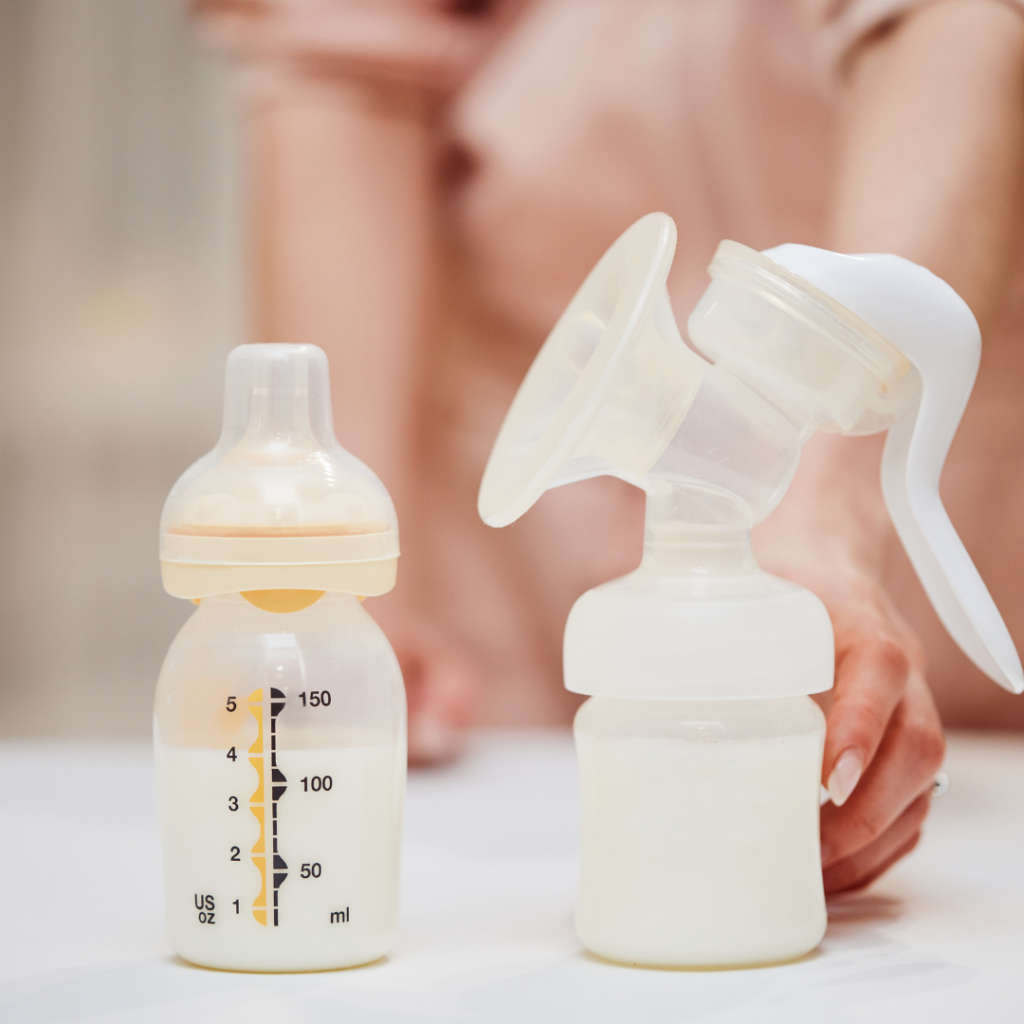
Here are the most up-to-date recommendations for properly expressing breast milk without contamination (2):
- Wash your hands carefully before beginning the process.
- Clean and sterilize your breast pump before using.
- Ensure the bottles or containers you store the milk in are boiled or cleaned properly.
Breast milk can be stored at room temperature, in the refrigerator, or in the freezer. Our general tips for properly storing breast milk are to…
- Label breast milk containers with the date of expression to maintain a first-in, first-out system.
- Use containers with tight-sealing lids to prevent leaks and contamination.
- Keep breast milk in the back of the refrigerator or freezer, where temperatures are more consistent.
Now let’s get into the specifics!
What containers can I use to store breast milk?
There are lots of options on the market now for breast milk storage and it can be overwhelming trying to choose the “best” one. But the truth is that there are pros and cons to each and it really depends on the space you have for storage and how long you’re planning to store the milk for.

Here are our current favorite options, including what to look for and brands we love.
BPA-Free plastic bottles
Opting for BPA-free plastic bottles is a popular choice among many moms. These containers are lightweight, easy to use, and come in various sizes to suit your storage needs.
Make sure to choose bottles specifically designed for breast milk storage to ensure they are safe and free from harmful chemicals.
Glass bottles
For moms looking to avoid plastic altogether, glass containers are an excellent alternative. They’re durable, don’t retain odors, and are easy to clean.
However, be cautious when handling glass, especially during those late-night feedings when you might be a bit sleep-deprived!
Breast milk storage bags
Designed for convenience, this option is space-efficient and easy to use. They often come pre-sterilized and can be frozen for longer storage periods (freeze flat to take up even less space).
Look for bags with double seals to prevent leaks and opt for ones that are specifically designed for breast milk storage.
How to prepare breast milk containers for storage
As a breastfeeding mom, ensuring the safe and proper storage of your expressed breast milk is essential for preventing contamination of breast milk and maintaining its nutritional integrity. Properly preparing breast milk containers for storage is a crucial step in this process.
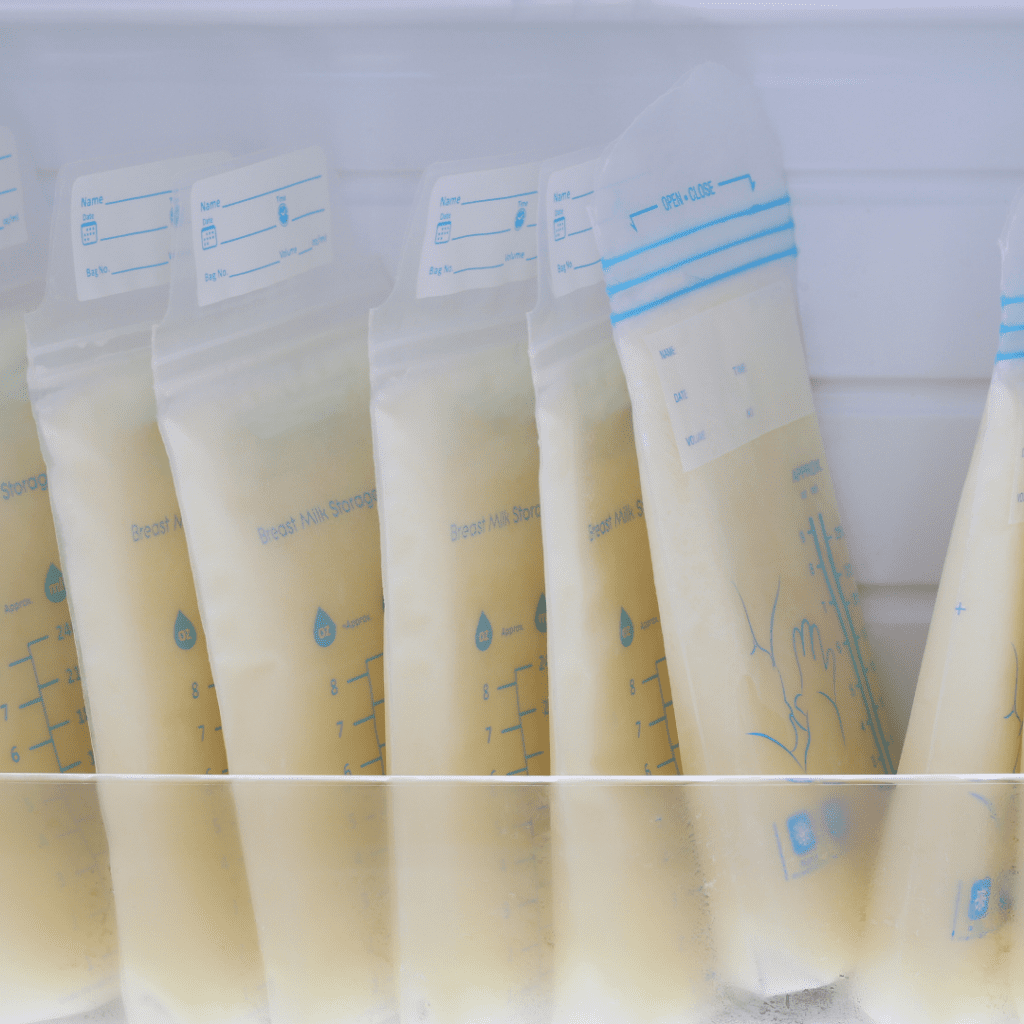
Follow the steps below to ensure everything is properly cleaned and ready to use.
Choose Suitable Containers
Select containers specifically designed for breast milk storage. Choose from any of the options listed above.
Wash Your Hands
You must wash your hands with soap and water before touching anything that will come in contact with your breast milk, including pump parts, storage containers, etc. This helps prevent the transfer of harmful germs and ensures the safety of your expressed milk.
Clean Containers and Equipment
Wash the breast milk containers and any pumping equipment, such as breast pump parts or bottle lids, in hot, soapy water. Rinse them well to remove any soap residue.
Sterilization
While washing containers with clean water and soap is necessary, it is also important that you sterilize your breast milk containers for added protection against harmful bacteria (3). You can do this by boiling them in water for 5-10 minutes or using a steam sterilizer according to the manufacturer’s instructions.
Air-Dry Thoroughly
After washing and sterilizing, allow the breast milk containers and equipment to air-dry completely on a clean, dry surface. Avoid using towels or cloths that may introduce contaminants.
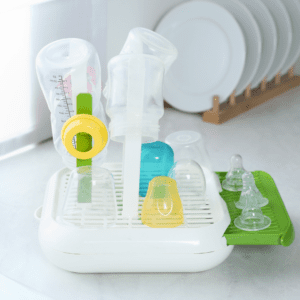
Assemble Containers
Once dry, assemble the breast milk containers, ensuring that all components are properly fitted and sealed. Check for any cracks or damages that may compromise the integrity of the containers.
Storing breast milk at room temperature
Breast milk, when cleanly collected, can last up to 4 hours at room temperature. You may have heard some people saying that it’s actually 8 hours, but that was only based on one study (4). We recommend playing it safe and sticking with the 4 hour benchmark.
Storing breast milk in the refrigerator
Freshly expressed breast milk can be safely stored in the refrigerator for a maximum of 4 days.
Note: By freshly expressed breast milk, we mean breastmilk that was just expressed and put straight into the refrigerator (without beginning a feeding first).
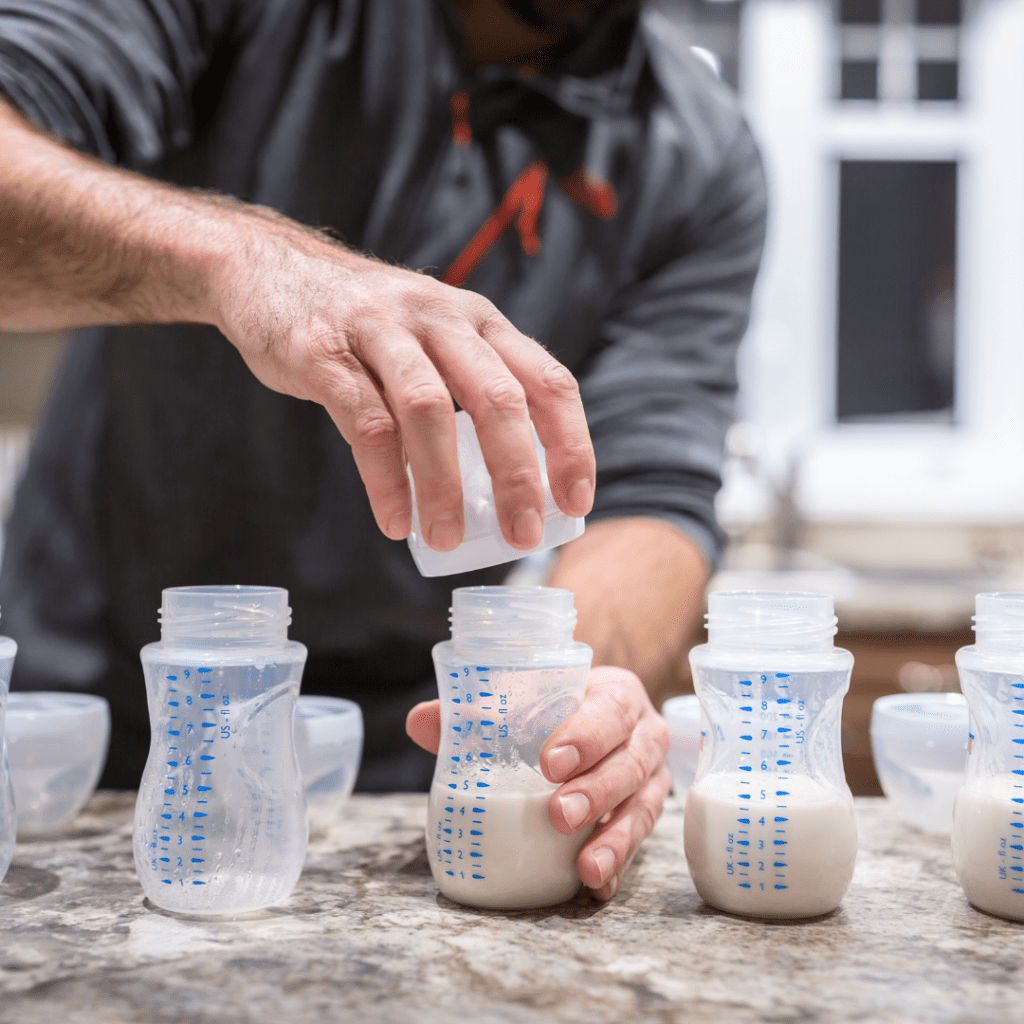
Storing breast milk in the freezer
Breast milk can be safely stored in the freezer for as long as 6 months, however, a period of 12 months in a deep freezer is still acceptable as per the CDC.
How to safely thaw frozen breast milk
- Plan ahead
Anticipating your baby’s feeding needs is the first step in safely thawing frozen milk. Pull out the desired amount from the freezer and place it in the refrigerator the night before you plan to use it. This slow thawing process helps preserve the milk’s nutrients. - Thaw under warm water
If you need breast milk more quickly, thawing under warm, running water is a safe alternative. Place the frozen milk container in a sealed plastic bag and place it under warm running water. Rotate the container occasionally for even thawing. - Avoid thawing in the microwave
While it may be tempting for its speed, avoid using a microwave to thaw breast milk. Microwaving can create hot spots and damage the milk’s beneficial properties. Opt for safer thawing methods to ensure the best outcome for your little one.
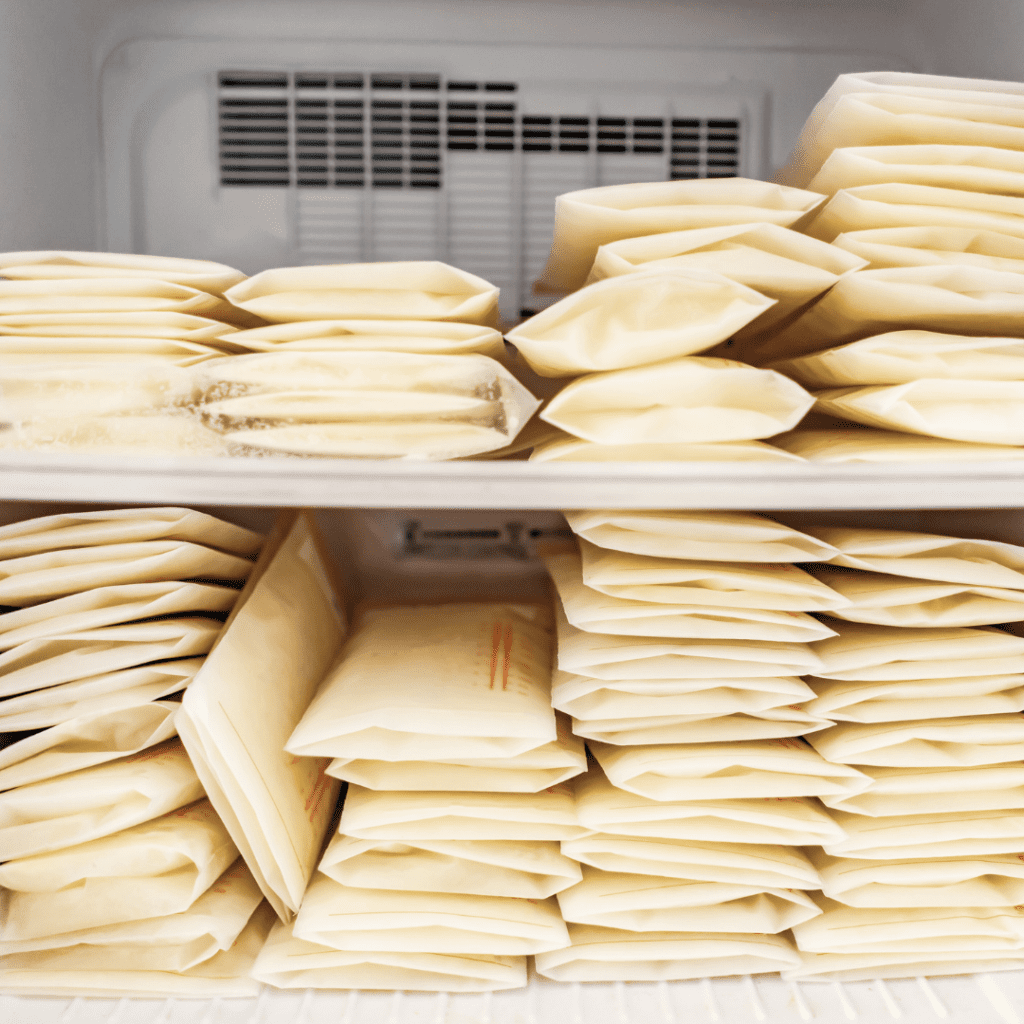
Once thawed, gently swirl or shake the container to mix any separated fat back into the milk. You may have heard that shaking or swirling thawed milk can affect the milk’s nutritional value. However, this is just a myth, and one study has shown that there was no significant change in the milk’s nutritional content between thawed breast milk that was gently shaken or left stationary (5).
Safety Tip!
Safety Tip!
Before feeding your baby, check the milk’s temperature by placing a few drops on the inside of your wrist. It should feel lukewarm, not hot. If it’s too warm, let it cool slightly before feeding.
Can you refreeze thawed breast milk?
No, you should not refreeze thawed milk. Aim to use thawed milk within 24 hours after thawing. After 24 hours, thawed milk should be discarded.
Keep this in mind when prepping breast milk to be stored. Consider separating breast milk into smaller quantities before freezing so that you can be more precise with how much to thaw and avoid thawing a lot more than needed.
Can you reheat breast milk?
Yes, absolutely! You can safely reheat breast milk, and it’s important you do it the right way. The key is to follow some essential guidelines to maintain the milk’s nutritional integrity and ensure your little one gets the best out of every feeding.
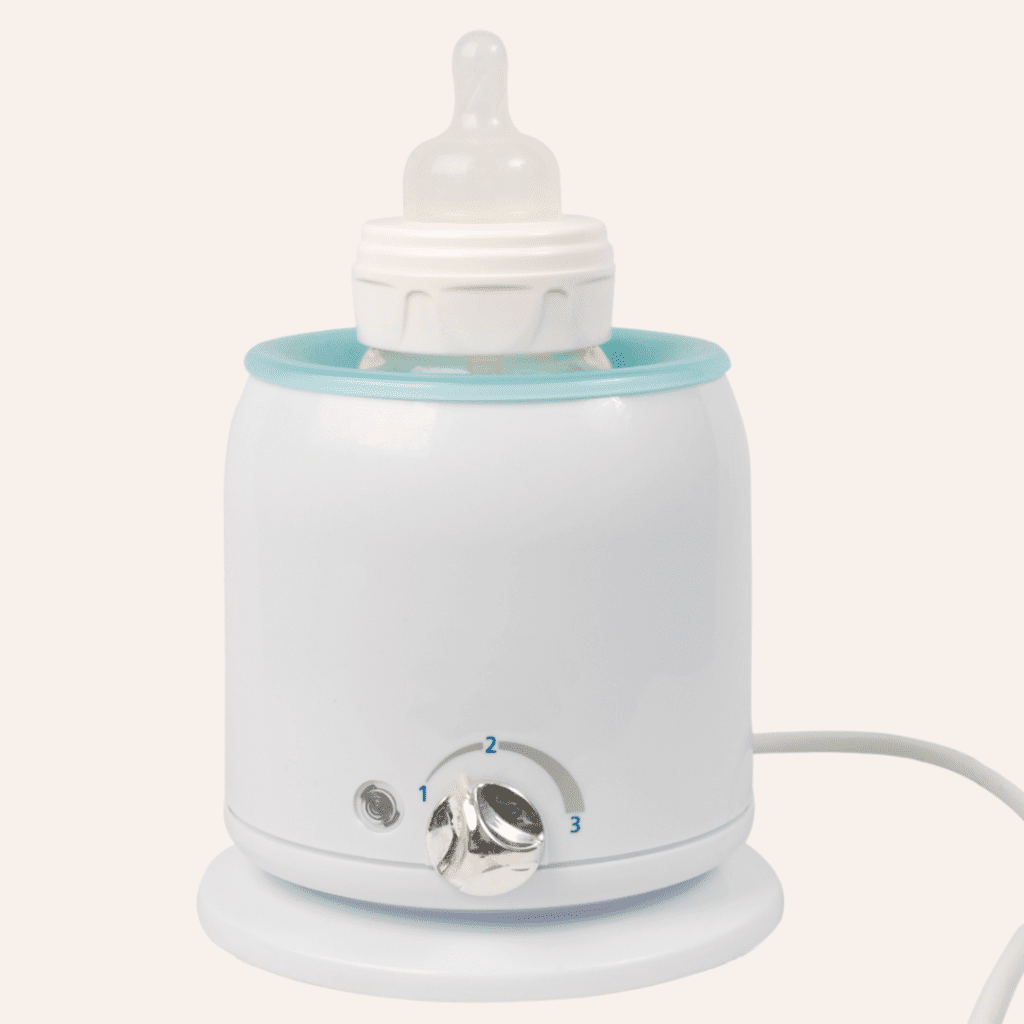
How to reheat breast milk
- Use a gentle warming method to heat breast milk, such as a bottle warmer or placing the container in warm water.
- Do not use a microwave, as it can create hot spots that may damage the milk’s beneficial properties.
- Do not boil breast milk on the stove. High temperatures can lead to a loss of essential nutrients and antibodies. Stick to gentle warming to preserve the milk’s nutritional value (6).
Once breast milk is reheated, it should be used right away. You should aim to finish the feeding within an hour to prevent bacterial growth.
Give breast milk a gentle swirl or stir after reheating to ensure an even distribution of heat. Check the temperature before serving it to your baby, as described above.
It’s also important to note that you should only reheat breast milk once. Do not place it back in the fridge or freezer after it’s been thawed or reheated. If your baby doesn’t finish a bottle of reheated breast milk, discard any remaining milk to maintain hygiene and prevent contamination.
Cooking with breast milk
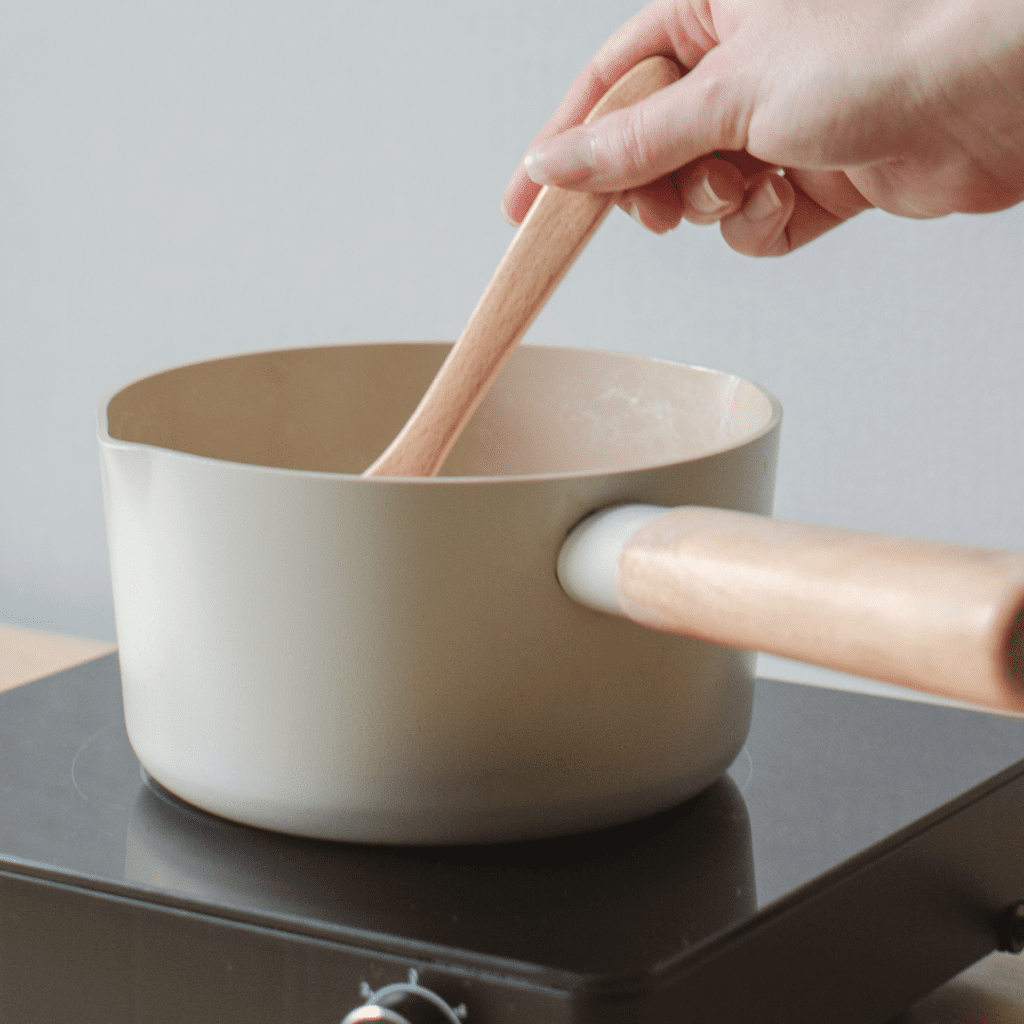
It is generally safe to cook with breast milk. Breast milk is not just a nutrient-rich source for your baby; it can also add a unique touch to certain recipes.
Does cooking breast milk destroy its nutrients?
Breast milk is a complex and delicate liquid that contains various essential nutrients, enzymes, and antibodies. It is, however, sensitive to high temperatures.
Prolonged exposure to heat can lead to a reduction in the concentration of certain nutrients (7). Research has shown that breast milk heated over 40 degrees Celsius (104 degrees Fahrenheit) impacted the nutritional qualities of the milk (7).
Therefore, it’s important that you avoid boiling breast milk when cooking. Our recommendation is to add it towards the end of a cooking process or gently warm it. Preferably, breast milk will be used in the preparation of meals that don’t require heat.
Do use breastmilk by...
Adding it to purees
Stirring it into already cooked items like oatmeal
Cooking it on the stove in recipes calling for medium heat or lower
Don't use breastmilk by...
Putting it in the microwave
Boiling it on the stove as part of any recipes
Baking it in the oven as part of recipes (ie. muffins, etc.)
What is leftover breast milk good for?
Leftover breast milk that’s been stored properly can be very useful, particularly for making other meals. But, if you have some milk that is no longer safe for consumption, and you hate the idea of seeing it go down the drain, we’ve got an idea for you too!
Baby purees
If your baby is transitioning on to solids, incorporating breast milk into purees can offer a familiar taste and ease the transition. The familiar flavor may make the introduction of new foods a more comfortable experience for your little one.
This also helps to add a nutritional boost to homemade or store-bought purees. The added nutrition, calories, flavor and creaminess can be particularly beneficial for babies who are just beginning their journey with solid foods.

Simply mix a bit of breast milk into any puree being offered. Transfer the breast milk-enhanced puree to a baby-friendly bowl and spoon-feed it to your little one, or preload it on a spoon for them to self-feed.
Milk substitute
Leftover breast milk can serve as a nutritious substitute for cow’s milk in a variety of recipes, such as pancakes, smoothies, or creamy sauces. Breast milk can also be used with coffee, tea, or cereal. Its natural sweetness adds a subtle flavor enhancement to your everyday meals.
Yes, it is safe for adults to consume it too – if they choose!
Milk bath
Expired breast milk doesn’t have to be thrown out right away. If you can’t stand the thought of getting rid of it after all that hard work, why not keep some to use for breast milk baths for your baby?
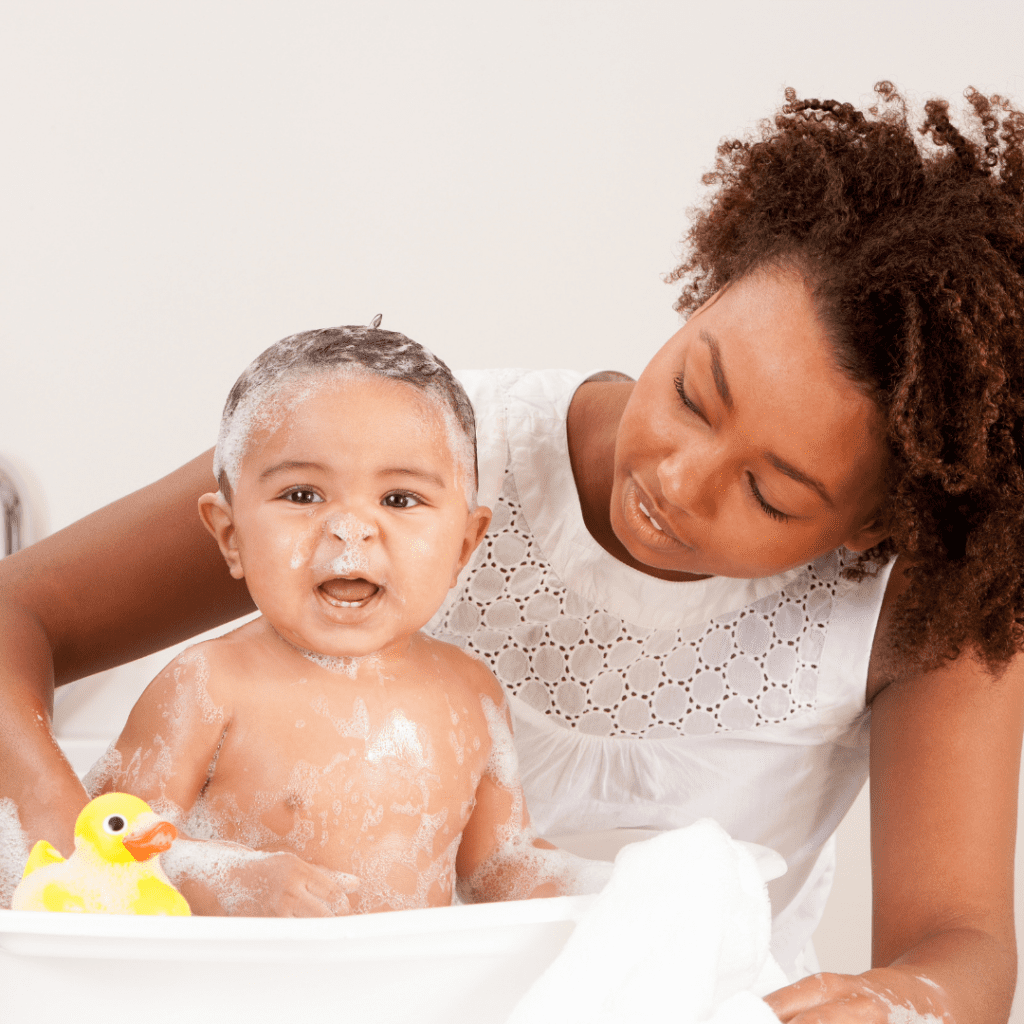
Fill the bathtub with warm water, then add about 10 ounces of breastmilk, depending on the amount of water you’re using for your baby’s bath. You could also freeze small amounts in an ice cube tray and add those to your baby’s bath rather than liquid breast milk.
Breast milk baths are great for the skin! Research has shown that milk baths are great for treating mild to moderate eczema (8).
Just be sure to clearly label any milk that is not safe for your baby to drink so that no one accidentally offers a bottle of expired milk to your little one.
What types of recipes can breast milk be added to?
Any recipe that calls for milk is typically ok for breast milk to be used instead! However, as mentioned above, we want to avoid recipes that require boiling or prolonged exposure to high heat.
Baking with breast milk is still an option, however, some of the nutrients may be lost in the process. Adding breastmilk to the finished product after the food has been cooked or baked would help replenish some lost nutrients.
Here’s our favorite!
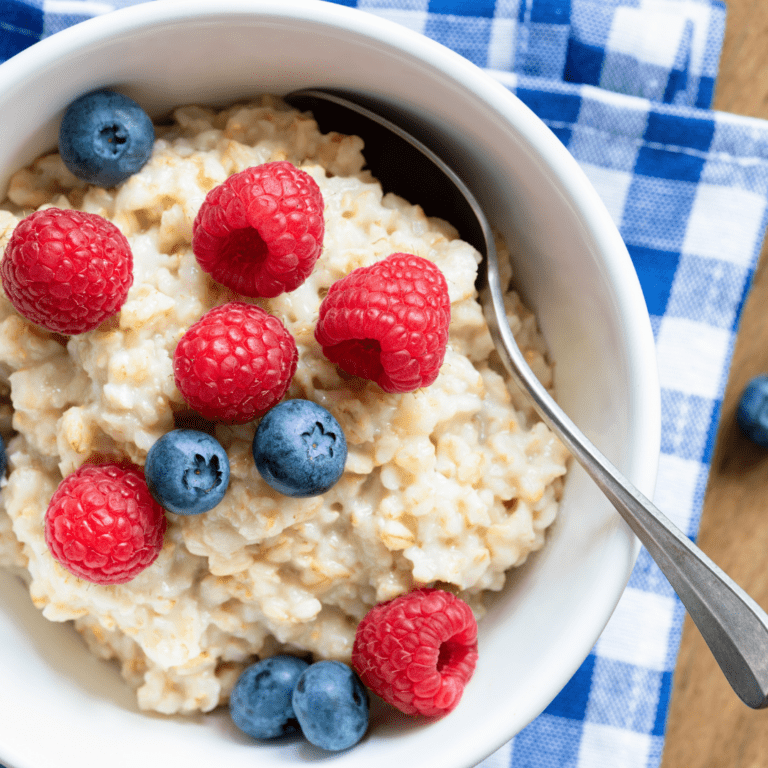
Breast Milk Oatmeal
Equipment
- 1 Pot (small or medium)
Ingredients
- ¼ cup of baby rice cereal or oats
- 1 cup of expressed breast milk
- Pinch of cinnamon (optional)
- Mashed fruits (optional)
Instructions
- Start by cooking the baby rice cereal or oats according to the package instructions. This usually involves combining the cereal with water and simmering until it reaches a smooth and creamy consistency.
- Once the cereal is cooked, gently stir in 1 cup of expressed breast milk. The addition of breast milk not only enhances the creaminess but also introduces valuable nutrients and antibodies to the oatmeal.
- For an extra touch of flavor, consider adding a pinch of cinnamon or incorporating mashed fruits such as banana or applesauce. While optional, we do recommend offering a variety of flavors and textures to your baby and this is an easy way to do that with a simple meal.
If you need a little inspiration on more dishes you could mix up with breast milk, look no further – we’ve got you covered!
With love and loads of creativity, we’ve put together a detailed 60 day baby led feeding meal plan filled with lots of recipes that are sure to bring meal time back to life. With so many recipes to choose from, you will hardly run out of meal ideas.
Check out our very detailed meal plan which also includes the strategic introduction of the top allergens, a gradual progression in textures using our signature Texture Timeline™, weekly grocery lists, and more!

Was this helpful? Pin it to save for later!
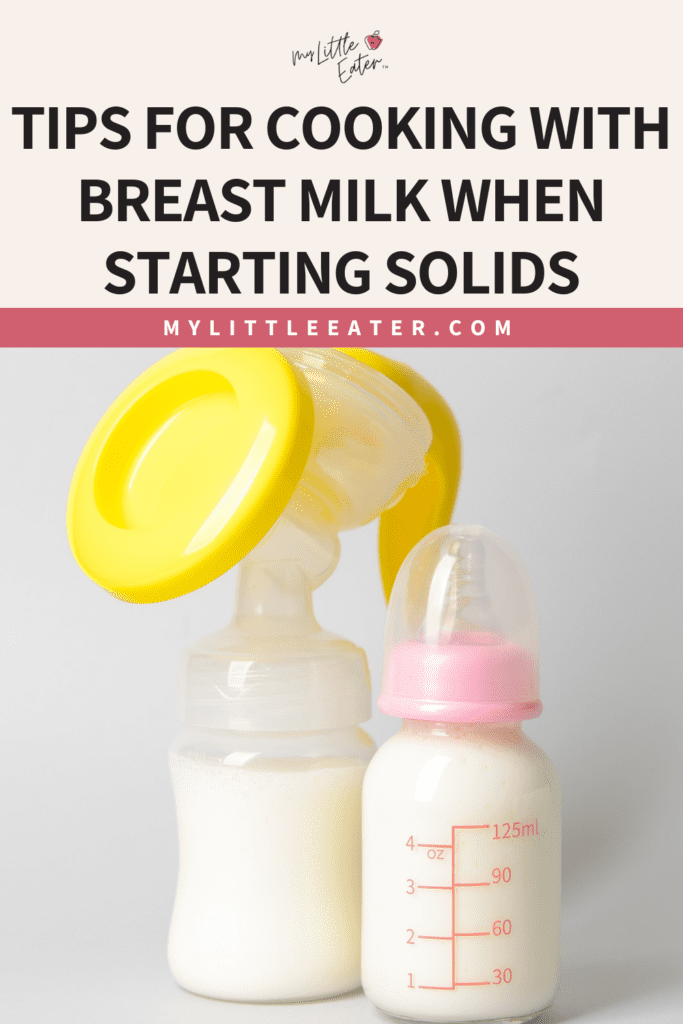

Edwena Kennedy, RD
Founder and lead Registered Pediatric Dietitian at My Little Eater Inc., creator of The Texture Timeline™, and mom of two picky-turned-adventurous eaters.

Edwena Kennedy, RD
Founder and lead Registered Pediatric Dietitian at My Little Eater Inc., creator of The Texture Timeline™, and mom of two picky-turned-adventurous eaters.
References
- https://www.cdc.gov/breastfeeding/recommendations/faq.html
- https://www.urmc.rochester.edu/childrens-hospital/breastfeeding-lactation-medicine/milk-storage.aspx
- https://www.cdc.gov/hygiene/childcare/clean-sanitize.html
- Igumbor EO, Mukura RD, Makandiramba B, Chihota V. Storage of breast milk: effect of temperature and storage duration on microbial growth. Cent Afr J Med. 2000 Sep;46(9):247-51. doi: 10.4314/cajm.v46i9.8564. PMID: 11320771.
- Lina Zhang, Jingyan Qu, Thom Huppertz, Jun Liu, Zhaona Sun, Peng Zhou, Effects of different freeze-thaw processes on the bioactivity and digestibility of human milk, LWT, Volume 156, 2022, 113025, ISSN 0023-6438, https://doi.org/10.1016/j.lwt.2021.113025.
- https://www.cdc.gov/breastfeeding/recommendations/handling_breastmilk.htm
- Bransburg-Zabary S, Virozub A, Mimouni FB. Human Milk Warming Temperatures Using a Simulation of Currently Available Storage and Warming Methods. PLoS One. 2015 Jun 10;10(6):e0128806. doi: 10.1371/journal.pone.0128806. Erratum in: PLoS One. 2016;11(2):e0148970. PMID: 26061694; PMCID: PMC4465021.
- Kasrae H, Amiri Farahani L, Yousefi P. Efficacy of topical application of human breast milk on atopic eczema healing among infants: a randomized clinical trial. Int J Dermatol. 2015 Aug;54(8):966-71. doi: 10.1111/ijd.12764. Epub 2015 Feb 2. PMID: 25640116.
